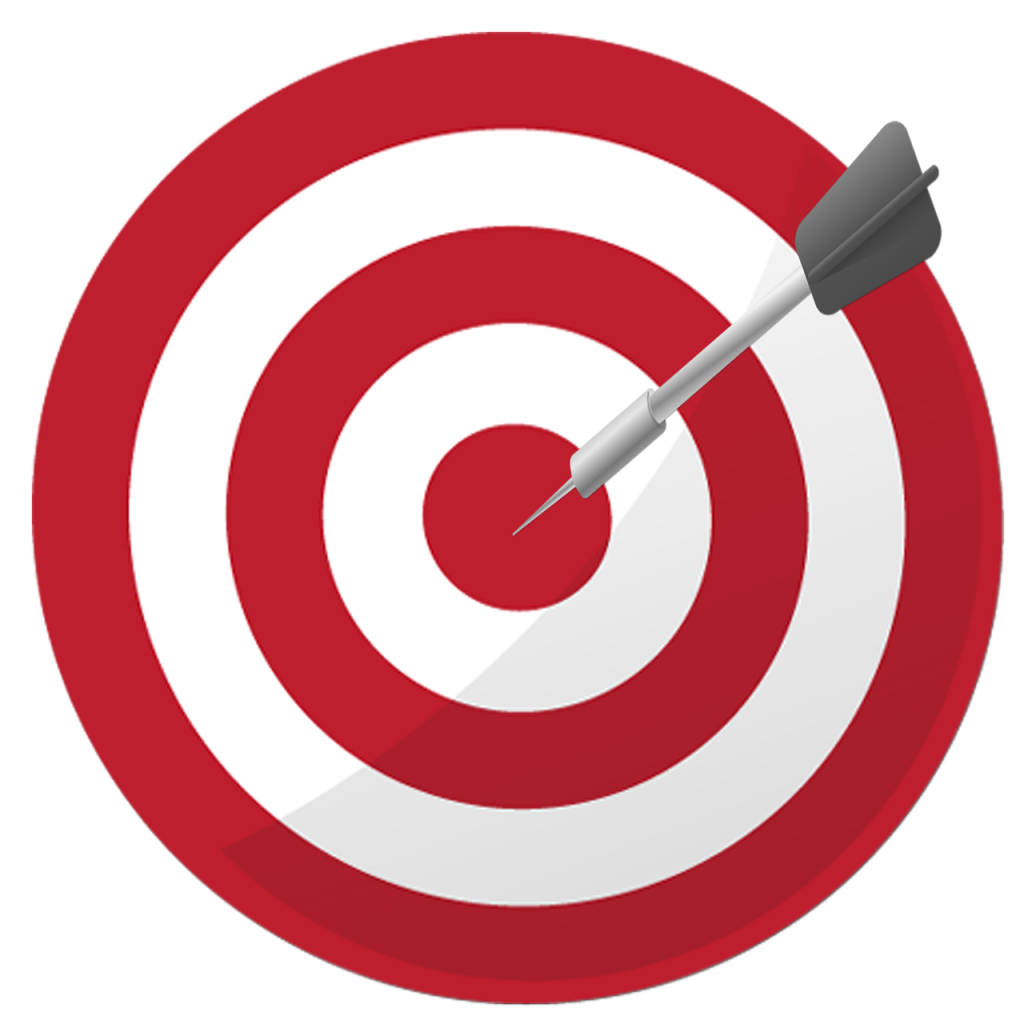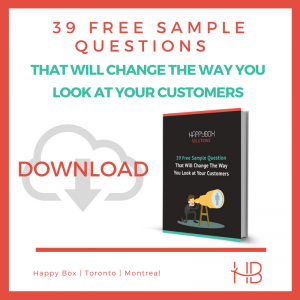Understanding Target Markets, Buyer Personas and Customer Journey Maps
A step-by-step guide to figuring out who your customers are — and what they want from you

Understanding who you’re talking to is what makes the difference between creating, a successful marketing campaign that really speaks to your customer, and the one that gets completely ignored.
To know your customer is to know how to market to them.
And as I mentioned in my article about building a successful sales funnel – it’s not about selling to everyone, as much as it’s about strategically getting the right information to the right people.
If you asked a business owner who their target market is and who their ideal customers are, a surprising number of them won’t have any idea how to respond.

Say what now? http://www.funnyordie.com/
Well, it’s not that surprising. I get it.
You didn’t come into owning your business with a marketing background. You’re good at what you do, but marketing isn’t your thing.
But what I’m talking about is a basic fundamental activity that every business should be doing.
You can hire someone with experience in marketing or you can outsource your marketing efforts to a third party company – but nobody knows your business better than you
It doesn’t really matter how it gets done, so long that it does actually get done.
Gaining a deep understanding of your target audience and the different personas within your audience will change the way you make decisions in your business – for the better!
Step 1: Your Target Market

Hit the target. Hit some sales. https://pixabay.com/
In order to sell your services or products effectively, you have to know who you are marketing to.
Your target market is a broad, almost a generalization, of the ideal customer for your business. The kind of person that is most likely to buy your services.
For example, if you ran a roofing business, your target market would be much different than a business that ran a video game arcade.
They would be home or property owners, for one. They would be a bit older – old enough to afford roofing services. They would have disposable income. They would be concerned about protecting their investment.
To determine your target market you have to understand the exact problem that you solve. This helps you to paint a picture of your ideal customer.
Who will find value in what you offer? Who has the problems that you solve? Who finds those problems to be the most troublesome?
These are the types of individuals that might make up your target market.
Actually write down who your ideal customer would be. For a roofing company it might look something like this;
“25-50 year old married man, home-owner, with a household income over $100,000 per year.”
Once you know who your target market is, then you can focus on finding ways to reach that target market and also breakdown your audience in different segments (which we’ll be discussing in our next Step)
Factors that make up your Target Market
Pinpointing your target market can be difficult if you have no understanding of all of the different aspects that can make up the demographics within your target market.
When outlining your own, consider the following;
- Where your buyers are located
If your business only provides its services to within a certain area (a city, county, or state/province) then that drastically lessens your target market, and alters your marketing strategies. You wouldn’t want to waste advertising dollars showing ads to people that live in Florida, when your business only operates in Ontario. Stick to your targets.
- How old are the individuals that you are targeting
When Taylor Swift releases a new album, she isn’t targeting 55-year-old men with her advertisements. They aren’t interested in the product that she produces. Who is interested in the product that you produce?
- Is your target market generally male, female, or either?
Limiting yourself to a single sex can be dangerous if you haven’t done the proper product research. For instance, on the surface a makeup company might only assume they are targeting women. But, with a little prying they may find innovative ways to market their product to men, who purchase it for their partners. Don’t limit yourself unnecessarily – be open to opportunity but honest about who buys your product.
- What is your target market interested in?
Just because someone plays soccer and is interested in sports, doesn’t mean that they are going to want to purchase products from your Baseball supply company. When outlining target markets remember to focus on the ideal customer, not fringe demographics that might be interested in small doses.
- Is the individual in the right situation to be interested in what you have to offer?
A roofing company wouldn’t want to waste time talking to someone that rents an apartment, and therefore is not responsible for maintaining or replacing the roof. However – they would be interested in talking to the management company in charge of those decisions.
These are all examples of individual aspects of a target market.
The truth is that any target market should be a combination of these factors.
Your target market isn’t just women. It’s “18-35 year old women, in Southern Quebec, with an interest in knee boarding.”
Outlining a target market doesn’t mean that you won’t accept customers outside of that market, it just gives you a point of reference for every marketing choice you make moving forward.
“Is this appealing to my target market?” should be a question before obligating any large sum of money to a marketing campaign.
Once you understand who your target market, it’s time to breakdown that audience into different buyer personas which will help you narrow down different groups within your target demographic.
Step 2: Build Buyer Personas

What type of people does your business stand a better chance with? https://pixabay.com/
So, now you understand who your ideal customer is in general.
But that won’t be every customer.
Every business has many different types of customers. Sticking with our roofing company example – their clientele would include homeowners, business owners, apartment complexes, office buildings and generally anyone that had a roofing need.
That includes a huge number of different people – and they all are different. They have different wants, needs, and budgets. Sure, both Tommy Homeowner and Billy CommercialProperty need roofing services, but they have completely different problems that need solving, with very different budgets.
Certain marketing messages will be effective with either, but they don’t overlap all that much. Tommy Homeowner probably won’t respond to well to marketing that focuses on CommercialProperties.
Tommy Homeowner might be concerned about keeping his family safe, while Billy CommercialProperties might be more concerned about legal liability. You see – different problems, similar solutions.
Buyer personas are important for understanding your customer base, and creating marketing messages that are specific to their needs. Writing down buyer personas of your typical types of customer helps to give you an understanding of what you’re doing right and what could be improved upon.
Once you understand the different buyer personas that you are dealing with, then you can custom-craft sales funnels and marketing materials specifically for them.
Every buyer persona has a different experience when working with your company – you just need to make sure it’s as positive an experience as possible!
Digging Deep into Buyer Personas
With a basic understanding of buyer personas, you can then begin to flesh out the personas of your buyers in greater detail.
It isn’t as simple as giving them cute little names like “Billy CommercialProperties” and “Tommy Homeowner.” You have to actually understand who each persona is, what each persona wants, and the potential barriers to winning their business.
The Buyer Persona Institute has some real badass information if you are willing to go through it.
But here’s a summary of some of the questions you will need to ask when creating your personas. Read the following list carefully and really think about each question;
- Basic buyer persona profile. Who are they? Where do they work? What kind of responsibilities do they hold? How are they going to evaluate the product you deliver?
- Priority initiative. What conditions trigger the buyer’s decision to look for a solution that you offer? Why are they interested in your product?
- Success factors. After purchasing your product, what kind of outcomes is this persona expecting? Can you reach or exceed those expectations? What are the problems that your product actually solves?
- Why might this person have concerns about your product or service? What might prevent them from purchasing from you? Essentially, these are the doubts that might run through a buyer’s head before purchasing your product, or during the time when you are attempting to close the sale. This helps you to outline well thought out answers to common questions.
- Customer journey map. What is the process that the customer actually goes through when purchasing your product? More on this in a bit.
- Think back to previous experiences that you’ve had with buyers in this persona. What kind of questions did they ask? What answers were successful? Take notes and use previous experience to your advantage.
This is the real meat and bones of the buyer persona outlining process. This is where you nail down the facts about who they are, what they want, and how you should deal with them as a customer.
You’d be surprised how much you can learn about people by sitting down and fleshing these ideas out. A lot of your pre-conceived notions about particular buyers might vanish before your eyes.
An awesomely fleshed-out buyer persona list can be a starting point for every marketing project that you take on moving forward, and an excellent point of reference when working with marketing companies.
Step 3: Customer Journey Maps

Headin’ out to buy some of your stuff. https://www.pinterest.com/
Speaking of the experiences your customer has with your business – what does that include?
What is the individual journey of each customer that buys your product? At what points do they interact with your business? How is payment handled? Where are they taken on your website after submitting information or scheduling a consultation?
Every interaction that your business has with the customer is all a part of the customer journey.
Think about your latest customer. Write down every step they took to purchase your product – from where they found you, to filling out their information on your website, to receiving a follow-up call a week later.
How often do they have to contact you in order to purchase the product? Are you collecting information in two different steps that could be done in one? Maybe adding an additional input to your contact page can eliminate an entire phone call from the process, and get the product delivered a day earlier?
Mapping out and actually writing down the process that a customer goes through to purchase your products can be hugely beneficial. Not only can it help you identify areas where the process can be streamlined and improved, but it can actually enlighten you to times where your customers might be getting frustrated throughout the process.
In essence, the customer journey is your product. Sure, you might install a new roof on their house – but the customer remembers much more than just the service rendered. They judge your business based on the quality of work, sure – but they also remember how working with you made them feel. It directly impacts future business.
Steps to Mapping the Customer Journey
Alright. Now that we have an understanding of customer journey maps and how they are helpful – it’s time to put one together for your own business.
Whether you do all of your business online, offline or some mix of the two – a buyer journey can be outlined for your processes.
Remember, a customer journey map is a framework for improving the customer experience.
When outlining these steps – let’s consider the typical steps that might be included.
Customer Acquisition – How did the Customer Find You?
Where did the customer first learn about your business? How did they know that your product even exists? Some common answers might include;
- Print Advertisements
- Online Advertisements
- Yellow Book Listings
- Online Directories
- Google Search
- Outside Links
There is almost an unending number of ways your business could be found, if you are doing everything you can to get your company in front of your target audience. Depending on how the customer is acquired, there might be different steps and completely different journey maps that need to be drawn up to accommodate that customer.
Touchpoints – How did the customer reach out?
Once a customer finds your business and is interested in your product, then they contact your business through one of your touchpoints, or communication points. These are the channels you open up to customers. A few common touchpoints that would be a part of a customer journey map include;
- In-Store
- Website
- Contact Form
- Phone
- Call Centre
- Social Network
Ultimately your goal should be to funnel your customers into your sales funnel at the same point, regardless of how they interacted with you.
Pre-Sales – Steps taken before purchase.
After reaching out to you through one of your available communication channels, how does the customer go about having their questions answered and doubts resolved? The way you accept payments might be unique to your specific business. Those that sell physical products might have a straight forward process, while those that offer services might have a more complicated one. Some of the common steps in the purchasing process might include;
- An initial conversation with the prospective customer, serving as an initial sales pitch.
- Answering questions, ironing out the finer details, and putting together proposals.
- Pre-Sale support. Answering questions, quieting doubts.
The pre-sales process is very likely to be unique to your company and product.
Purchasing – How and when does the customer pay?
Once the customer has decided that they will indeed purchase your product, how do they go about it? Taking payments is the most important part of any transaction. You want it to be smooth and painless for the customer. A few popular steps during the purchasing process include;
Post-Sale Communication – when, and how will you reach out in the future?
One goal of any business is to turn a single sale into repeat business. Nurturing past and present clients is an important part of any customer journey. Decide when and how you want to reach out. Some common steps include;
- Follow-up email.
- Follow-up phone call.
- On-site visit.
- Direct-mail newsletter
LOOKING FOR A BETTER UNDERSTANDING OF YOUR CUSTOMERS?
Then make sure to download…
